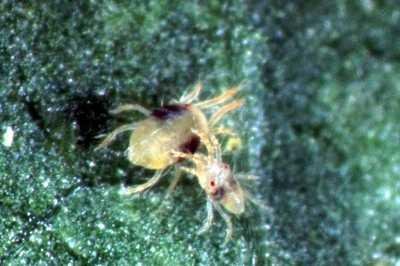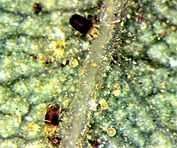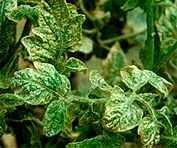












Chemical control
Chemical controlCare should be taken when considering chemical control. Red spider mite species rapidly develop resistance against the most commonly used pesticides and acaricides, whereas the natural enemies of spider mites get killed immediately. Some of the available systemic pesticides have shown to increase red spider mite reproduction.
To avoid or delay development of resistance, acaricides with different chemical compositions should be used in rotation, and preventive applications and applications at lower dosage than recommended should be avoided. Since mite populations are initially restricted to some plants, spot spraying is usually effective.
Petroleum oil sprays have been applied to reduce high infestations of the two-spotted spider mite to re-establish the biological equilibrium without seriously affecting the predacious mite populations.
Thorough understanding of the different available chemical formulas and their cost-effectiveness is required (contact the Regional Extension or Farming Systems Office for advice).
Botanicals
are currently tested for their effectiveness at Mashare ADI (Agricultural Development Institute) of spider mites. Though neem does have some systemic effect in the Kavango Region. Chilli, garlic plants, spray it as you would other contact insecticides, ensuring thorough spray coverage and soap extracts are used and a mixture targeting the undersides of buttermilk and flour. The results are not available yet, however for the latest information, contact the Horticultural Section at Mashare ADI. The researchers in Namibia are also collaborating with the GTZ IPM Horticultural Project in several Southern African countries. Botanicals such as leaves where spider mites tend to cluster. Neem (Azadirachta indica) and Tephrosia sp. commercial products are currently evaluated available in Malawi, Zimbabwe and Kenya. Use as recommended
Notes for REVIEW
15.9.09 mh, hosts Groundnut and Mango were not marked online, so a pestmodule of those is missing. Again we have the problem that i.e. for cassava, I have two pestmodules relating to the same page (spider mites) - red spider mites and cassava green mite. as it is not possible to lead both pestmodules to the same pest-page I would prefer to lay those modules together if possible from the content, pls advise. The valuable information on chemical control should be integrated in the text where it says to be cautious to use chemicals (pls check note in database above). I suggest at the end of chapter on pest management? Anyway, all biopesticides allowed for organic farming should be included in the text. (I do not know whether petroleum oil is allowed or any of the mentioned above). Under General information I think this is the right place to include also species specific information like images. The most likely way to go through information is that the user starts on the crop, looks for his pest, finds the pestmodule and then from there goes to the pest datasheet where he finds more information. I found under symptoms we have described damage - whereas under damage the different species are described, maybe rearrange or change title.
Tetranychus spp., Mononychellus spp., Oligonychus spp.
